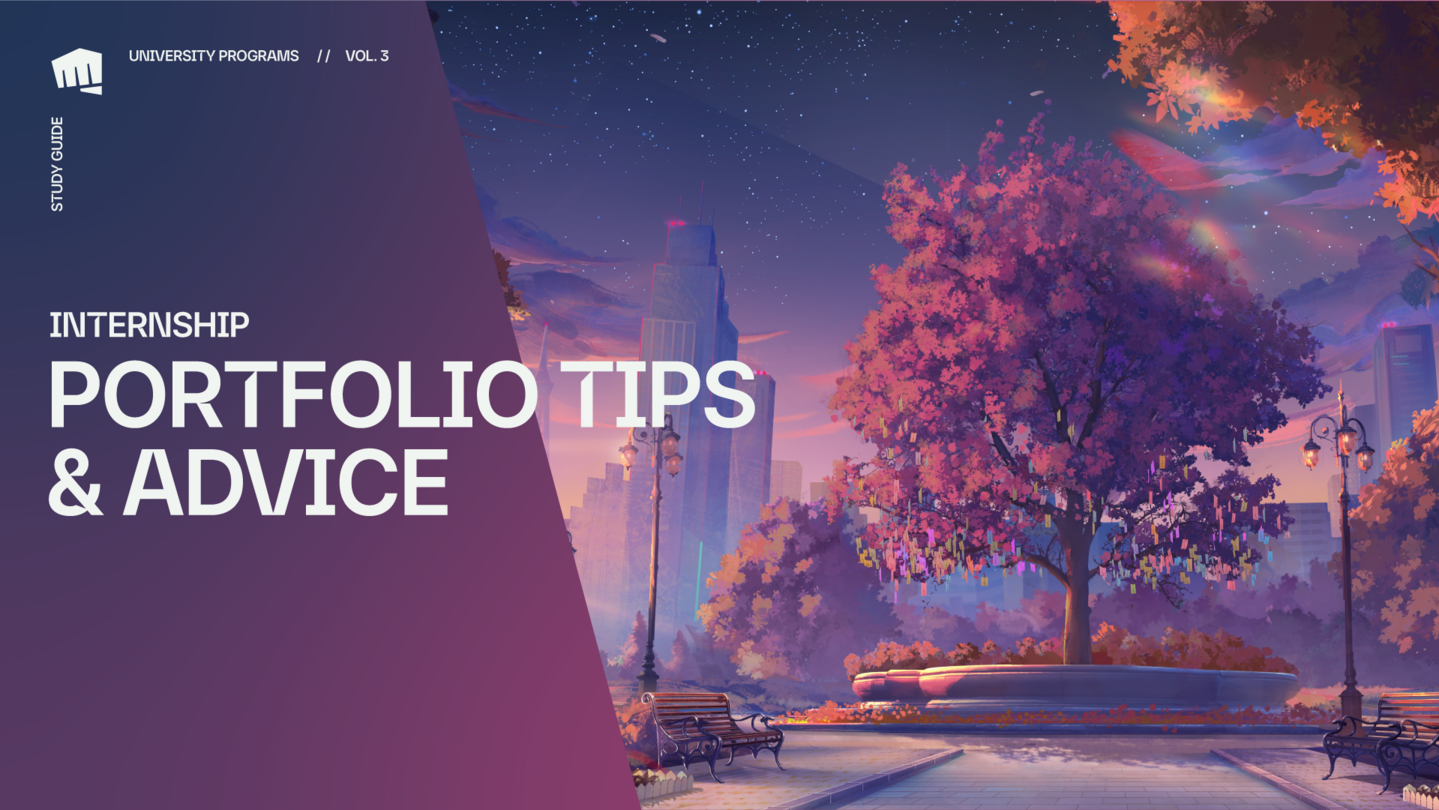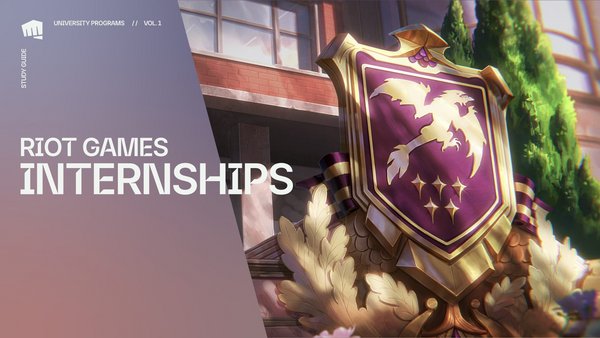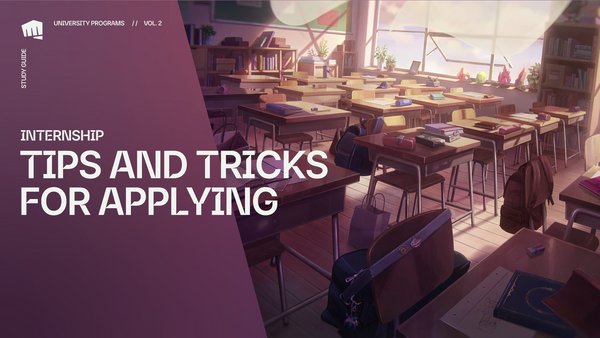Portfolio Tips and Advice for Riot Games Internships
Every year, Riot Games’ University Programs launches our US Summer Internship Program to help students and players connect their passion for games to meaningful careers. Beginning as early as September, we open new roles for our US Summer Internship Program. For information about our current roles, eligibility, and timelines, visit our internships page.
This study guide focuses specifically on creative roles and portfolios but if you want some overall resources to help with your application, check out our first two study guides:
Volume 1: From Interns to Full Time
Volume 2: Tips and Tricks for Applying
Volume 3: Starting Your Portfolio
Not every role will require a portfolio, but roles in art and design may require you to submit one with your application. If you haven’t created a portfolio in the past and don’t know where to start, this guide is here to help you showcase your best work.
What Is a Portfolio and Why Are They Important?
In general, a portfolio is a collection of original work and/or projects. It is a method to show your interests, passions, process, and overall craft expertise. Different from a resume or cover letter, a portfolio allows you to visually share your style and skills. As a reviewer, portfolios serve as a medium to better understand you as an applicant and the applicability of your work to the role.
From animation to concept art, and visual effects to user experience design, there are many different types of disciplines within the video game industry. A portfolio will inform others what type of work you are interested in while highlighting your unique style.
Portfolios serve as a powerful tool to show how you’ve grown in your discipline and are a platform for thoughtful feedback to fuel future growth.
General Tips When Submitting Portfolios
We want your portfolio to set you up for success no matter where you are in your application process or career.
Access: The best portfolios are the ones we can actually see! Portfolios submitted to any role should be accessible. Make sure we can view the portfolio and any links within it.
Where To Host Your Portfolio: An online format is preferred (Artstation, personal websites, social media, etc.). Downloadable PDFs are acceptable for non-motion roles. You do not need to spend a fortune housing your portfolio.
Alignment: Intentionality goes a long way. Tailor your portfolio to the specific craft you are interested in. For example, if you are applying for a 3D Character Artist internship, ensure your portfolio shows your skills in character modeling.
Organization: Structure your portfolio in a way that is easy to follow so reviewers can find what they need. This is extremely important if your portfolio encompasses multiple types of roles or art styles. Place your best work that fits the criteria of the job towards the top.
What to include: You may include pieces from coursework projects, passion projects, game jams, or even fan art. As long as it is work that you created and are proud of, we recommend showcasing a curated number of pieces rather than every piece you've ever made.
Thought Process: Showcasing a final rendered product is powerful. What is equally powerful is taking someone on a journey of your process. A portfolio will help others understand how you went from an idea/concept to the final product. Creating a timelapse with a GIF or recording is a good way to show your process.
Learning More About Portfolios and Disciplines
We provide a detailed portfolio and reel suggestion on our website that breaks down every discipline. If you are unsure where to begin or want to learn more about different types of game art, we have online series focused on art and creative disciplines like So You Want to Make Games, Super Art Power Hour, The Setup, and more on Riot Games YouTube.
Concept Art
Character Art
Character Animation
Environment Art
Sound Design
Game Design
Technical Art
UI Design
Discover more about UX Design at Riot Games.
VFX Art
Advice from Previous Riot Interns
Isabel W., VFX Intern: “Quality over quantity!!!! Have your reel be less than one minute and only show your best work! One golden piece will do much more for you.”
Liz H., VFX Intern: “If you can, make a reel specifically for the company you are applying. Game studios often want to see work that reflects their style so they know off the bat you can hit the ground running when your internship starts. Show that you can be on their brand. Put your best work at the front. If your work is highly technical make sure that it still LOOKS GOOD. Show that you know the principles of color, form, composition, and timing. Keep your reel short and mercilessly cut things that are not your very best stuff! Clean up your website to look professional but still showcase your personality.”
Elena S., Animation Artist: “When making a reel, find ways to make it stand out! There are a lot of ‘lipsync,’ and body mechanics assignments, so infusing your work with clear character and humor or eliciting an emotional reaction is a great way to distinguish it.”
Timmy L., 3D Character Artist: “Self-reflect on what creating art means to you. Being able to effectively and enthusiastically articulate what your influences, interests, and goals are can make you stand out as more relatable and compelling as a candidate. Art is a continually growing process, so don’t be afraid to admit your shortcomings, but more importantly, be able to explain how you plan to tackle them and what you can do differently in order to improve.”
You are not alone in this portfolio process. Whether you are creating your first portfolio or seeking to understand the different types of disciplines, we are here to empower you on your career journey. Each year our US Summer Internship applications open in the Fall with the internship program beginning the following summer. While the roles available may change, usually they cover game design, software engineering, art, production and more. For the full info on all the available roles and the eligibility requirements, check out our Internships page.


